Do you need help to get your HVAC business noticed online? You’re not alone. In today’s digital world, potential customers are turning to search engines more than ever to find the services they need. Your website’s search engine optimization gives you a big opportunity to reach new clients and develop your business.
Not to worry! You’ll learn how to overcome these obstacles and succeed online with this HVAC SEO tutorial. From keyword research and website optimization to local business listings and targeted content marketing, we’ll cover everything you need to know to get your website ranking higher in search results and attract more qualified leads.

By the end of this guide, you’ll be able to:
- Identify the right keywords to target your ideal customers
- Get your site optimized for humans and search engines.
- Build valuable backlinks to your website
- Create engaging content that attracts more visitors
- In order to attract and retain consumers, you must control your online reputation.
So what are you waiting for? Let’s get started and unlock the full potential of your HVAC business with the power of SEO!
Introduction to HVAC SEO
In the current digital marketing landscape, Search Engine Optimization (SEO) is a crucial tool for firms in many industries, including HVAC. HVAC SEO uses customized SEO methods to boost HVAC companies’ online presence. This unique technique ensures that potential customers find HVAC companies’ services online quickly and easily.
HVAC SEO is crucial in the digital world. It is critical to have a visible presence in search engine results since an increasing number of individuals are utilizing the internet to find local businesses and products. An SEO-optimized HVAC company would rank high in searches for “HVAC repair near me” or “best HVAC services.” Being viewed by the correct audience at the right moment is crucial for generating quality leads.
A solid HVAC SEO strategy includes numerous things. It entails optimizing a company’s website using terms potential buyers may use in searches. HVAC SEO goes beyond keywords to provide useful, educational content that answers clients’ HVAC questions. This content boosts search engine rankings and establishes the organization as an HVAC industry expert.
Additionally, HVAC SEO techniques depend on local SEO. It optimizes a firm for local searches so it appears in HVAC service search results for local customers. Due of their location-specific services, HVAC firms must consider this.
Finally, HVAC SEO is a multifaceted strategy that can boost HVAC companies’ online visibility. Keyword optimization, excellent content, and local SEO effectively link HVAC suppliers with their target audience. HVAC SEO is essential for organizations in this area to stay competitive online.
The Evolution of HVAC Marketing and the Role of SEO
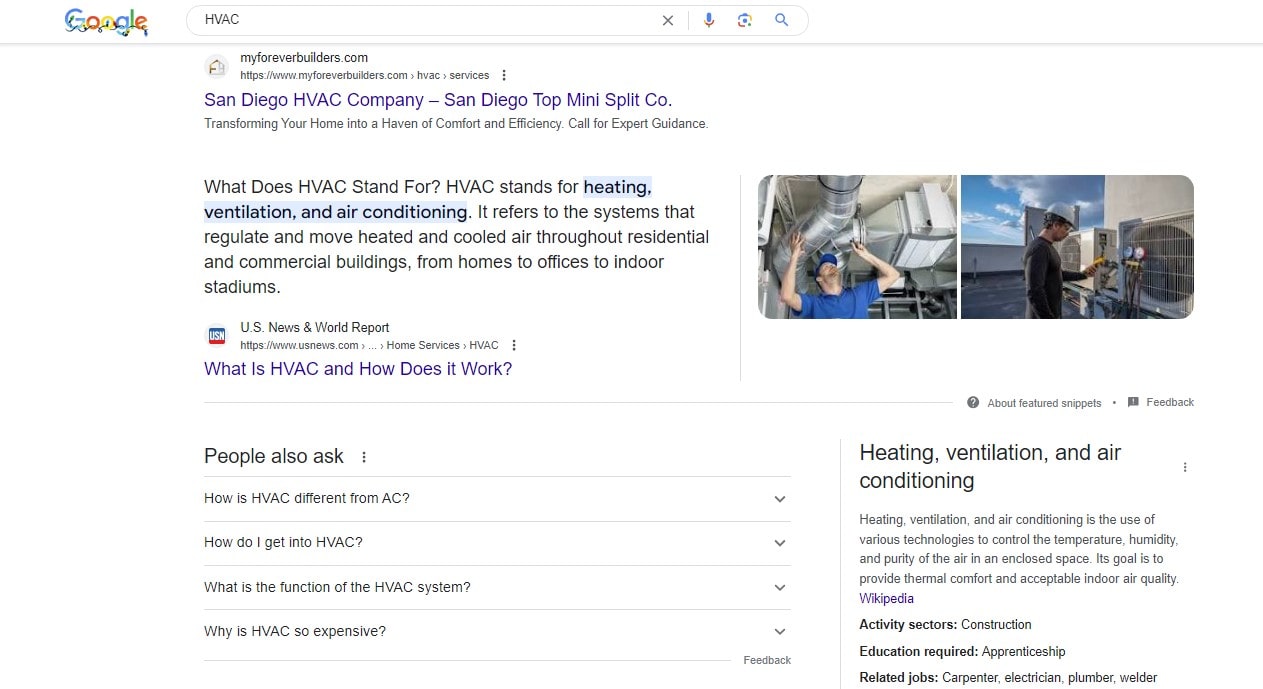
The HVAC (Heating, Ventilation, and Air Conditioning) industry, like many others, has undergone a significant transformation in its marketing strategies over the years, particularly with the advent of digital technology. This evolution has been marked by a shift from traditional marketing methods to a more digital-focused approach, prominently featuring Search Engine Optimization (SEO) as a central component.
In the past, HVAC companies predominantly relied on conventional marketing techniques such as print advertisements, direct mail, billboards, and local TV or radio spots. These methods, while effective in their time, were largely based on a broad, scattergun approach to reaching potential customers. The shift to digital marketing, however, brought about a targeted strategy, aiming to connect businesses with their specific audience.
Customers started using search engines like Google to locate nearby companies and services as the internet became more integrated into people’s daily lives. This change in consumer behavior marked a pivotal moment for HVAC marketing. The focus shifted from simply broadcasting a message to being easily discoverable when a potential customer actively searched for HVAC-related services.
SEO emerged as a vital tool in this new landscape. It involves optimizing a company’s website and online content to rank higher in SERPs. For HVAC companies, this meant incorporating relevant keywords, such as “air conditioning repair” or “HVAC installation services,” into their web content, blogs, and even social media posts.
The role of SEO in HVAC marketing is about more than just increasing website traffic. It’s about attracting the right traffic – potential customers in need of HVAC services. By ranking higher in SERPs, HVAC companies gain increased visibility, credibility, and a higher likelihood of attracting quality leads.
Furthermore, local SEO became particularly important, as HVAC services are inherently local in nature. Optimizing for local SEO ensures that when someone searches for HVAC services in a specific area, local companies appear prominently. This strategy includes managing local listings, encouraging customer reviews, and creating locally relevant content.
In summary, the evolution of HVAC marketing from traditional methods to a digital-first approach has made SEO an indispensable tool. It allows HVAC businesses to reach their target audience more effectively, matching their services with the customers who are actively seeking them. As digital trends continue to evolve, the role of SEO in HVAC marketing is likely to grow even more significant, further shaping how these companies connect with and serve their communities.
Understanding the Basics of SEO for HVAC
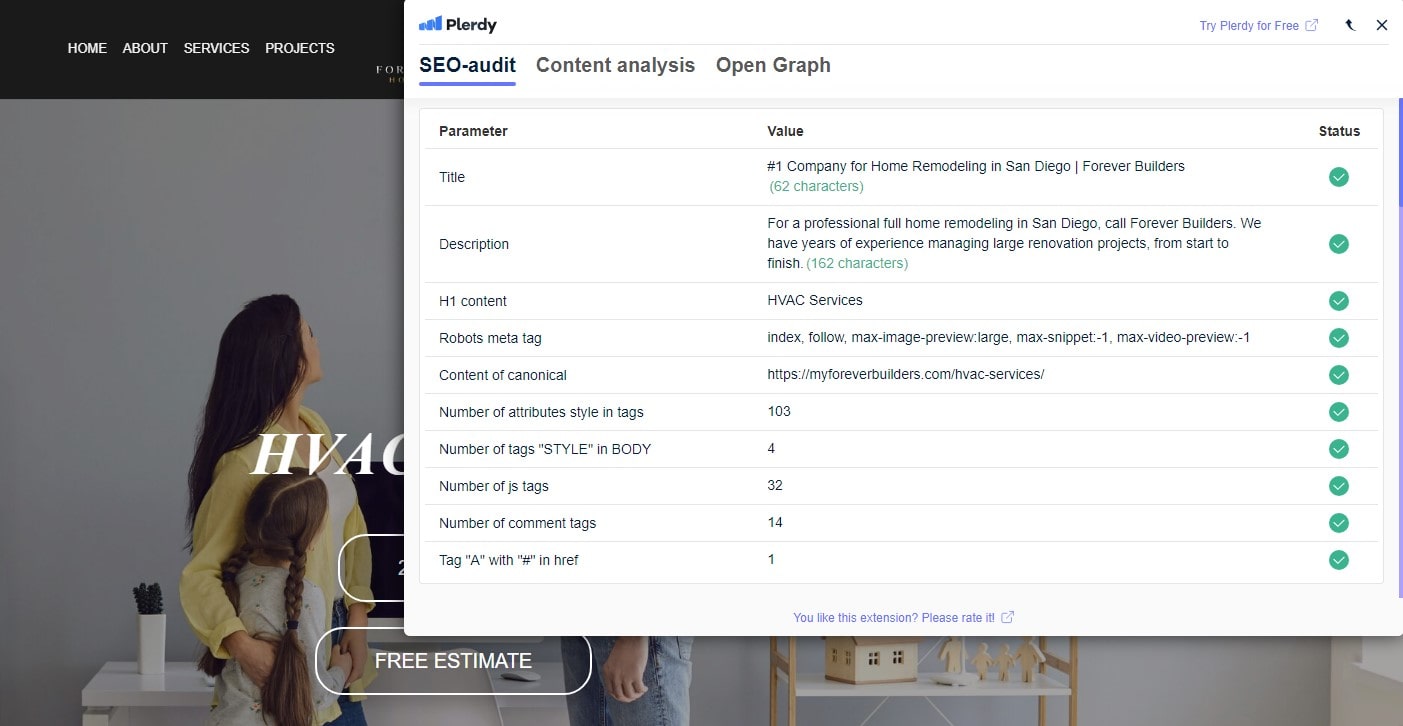
HVAC companies looking to boost their internet presence and consumer base must understand SEO. SEO for HVAC aims to boost a website’s search engine rankings, especially for HVAC-related searches.
- Keyword Research: Doing thorough keyword research is essential for every search engine optimization campaign. Finding out what people are searching for when they need HVAC services online is a big deal for HVAC providers. Search terms like “air conditioning repair,” “heating installation,” and “HVAC maintenance” are examples of service-related keywords. If you want your content to match your target audience’s inquiries, you need to know their language and how they search.
- On-Page Optimization: The next step is on-page optimization once the right keywords are identified. This process involves strategically incorporating these keywords into various elements of a website, including titles, headings, meta descriptions, and content body. It’s not just about stuffing keywords but using them in a way that feels natural and provides value to the reader. On-page optimization also includes ensuring that each webpage has a clear, user-friendly structure, with engaging, informative content.
- Quality Content Creation: As with any SEO strategy, content is king, and HVAC SEO is no exception. Creating high-quality, relevant content helps rank higher in Google search engine results and establishes your business as an authority in the HVAC industry. This can include blog posts, how-to guides, and informative articles about HVAC systems, maintenance tips, energy efficiency, and more.
- Local SEO: The majority of HVAC consumers look for services within their nearby area, making local SEO more vital for these businesses. Search engine optimization (SEO) for local inquiries, listing management (including Google My Business), and review optimization (including the acquisition of positive ratings) are all part of this process. If you want more exposure to people in your immediate area, one strategy is to get your company included in local directories and on maps.
- Mobile Optimization: A mobile-optimized website is essential in this age of ever-increasing smartphone internet usage. This necessitates a mobile-friendly design, accurate display, and effortless navigation on your site. As a result of Google’s mobile-first indexing, search engine rankings are now based on your website’s mobile version specifically.
- Link Building: Search engine optimization also includes getting high-quality backlinks from authoritative domains. This might mean anything from partnering with other local businesses to getting your HVAC company included in industry directories to making content that people want to share and connect to organically. An increase to your site’s authority and rating can be achieved through backlinks, which show search engines that other websites value and trust your material.
- Analytics and Monitoring: Finally, if you want your SEO plan to work, you need to keep an eye on how well your website is doing. You may learn a lot about your site’s traffic, user habits, and SEO performance with the help of tools like Google Analytics. You can boost your search ranks even further by evaluating this data on a regular basis and making educated decisions based on it.
SEO for HVAC businesses is a multifaceted approach that requires careful planning and execution. By grasping and applying these fundamental concepts, HVAC companies may greatly enhance their online presence, draw in more clients, and thrive in the digital era.
The Benefits of SEO for HVAC Companies
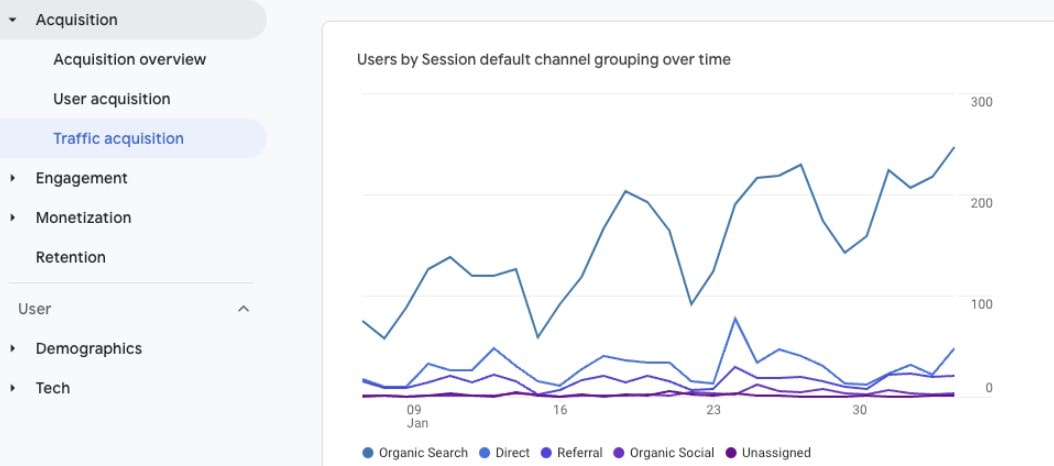
Integrating Search Engine Optimization (SEO) into marketing strategies has become a game-changer for HVAC companies. SEO provides a strategic advantage in an industry where local competition can be fierce and customer loyalty is paramount. Here, we explore SEO’s manifold benefits to HVAC businesses, underlining why it’s more than just a digital marketing buzzword.
Increased Online Visibility:
- Your company’s visibility will increase as you rise in the search engine results pages (SERPs).
- Search engine optimization (SEO) helps HVAC companies get greater exposure when people are looking for services like theirs.
- This heightened visibility is particularly crucial in an era where most customers begin their search for services online.
Enhanced Local Reach:
- Local SEO tactics ensure your business appears in local search queries and maps, directly reaching the community you serve.
- To improve your odds of showing up in the highly sought-after local “3-pack” on Google Maps, make sure your Google My Business page is optimized.
- This local focus connects you with customers who are not just browsing, but are actively seeking HVAC services in their area.
Cost-Effective Marketing:
- Unlike traditional advertising, SEO offers a more cost-effective way to reach your target audience.
- After your website improves its ranking, it can keep drawing visitors without spending money on pay-per-click (PPC) ads.
- The inbound nature of SEO reduces the need for more expensive outbound marketing strategies.
Improved User Experience:
- SEO goes beyond pleasing search engines to make your website more user-friendly.
- A well-optimized site is typically more user-friendly, with faster load times and easier navigation, leading to increased customer satisfaction and potentially higher conversion rates.
Building Credibility and Trust:
- Websites with better search engine rankings tend to have a more reliable and trustworthy reputation.
- Regularly updated content, such as helpful blog posts and informative articles, can establish your company.
- Positive online reviews, which are part of local SEO strategies, further enhance trust among potential customers.
Long-Term Results:
- While SEO requires upfront effort and time, it offers long-term benefits.
- Unlike paid ads, which stop generating leads once you stop paying, a strong SEO presence can provide sustained traffic and lead generation.
- Consistent SEO efforts can yield compounding results over time, continually improving your online presence.
Data-Driven Insights:
- SEO tools provide valuable data on customer behavior, preferences, and search trends.
- These insights can inform not just your online marketing strategies but also broader business decisions.
- If you know what people are looking for, you may personalize your offerings and advertising to better suit their needs.
In essence, SEO empowers HVAC companies to navigate the digital landscape with more agility and precision. It’s not just about getting to the top of search results; it’s about connecting with the right audience, in the right place, at the right time. By harnessing the power of SEO, HVAC businesses can achieve greater online visibility, forge stronger customer relationships, and drive sustainable growth.
Creating Content That Ranks: Tips for HVAC SEO
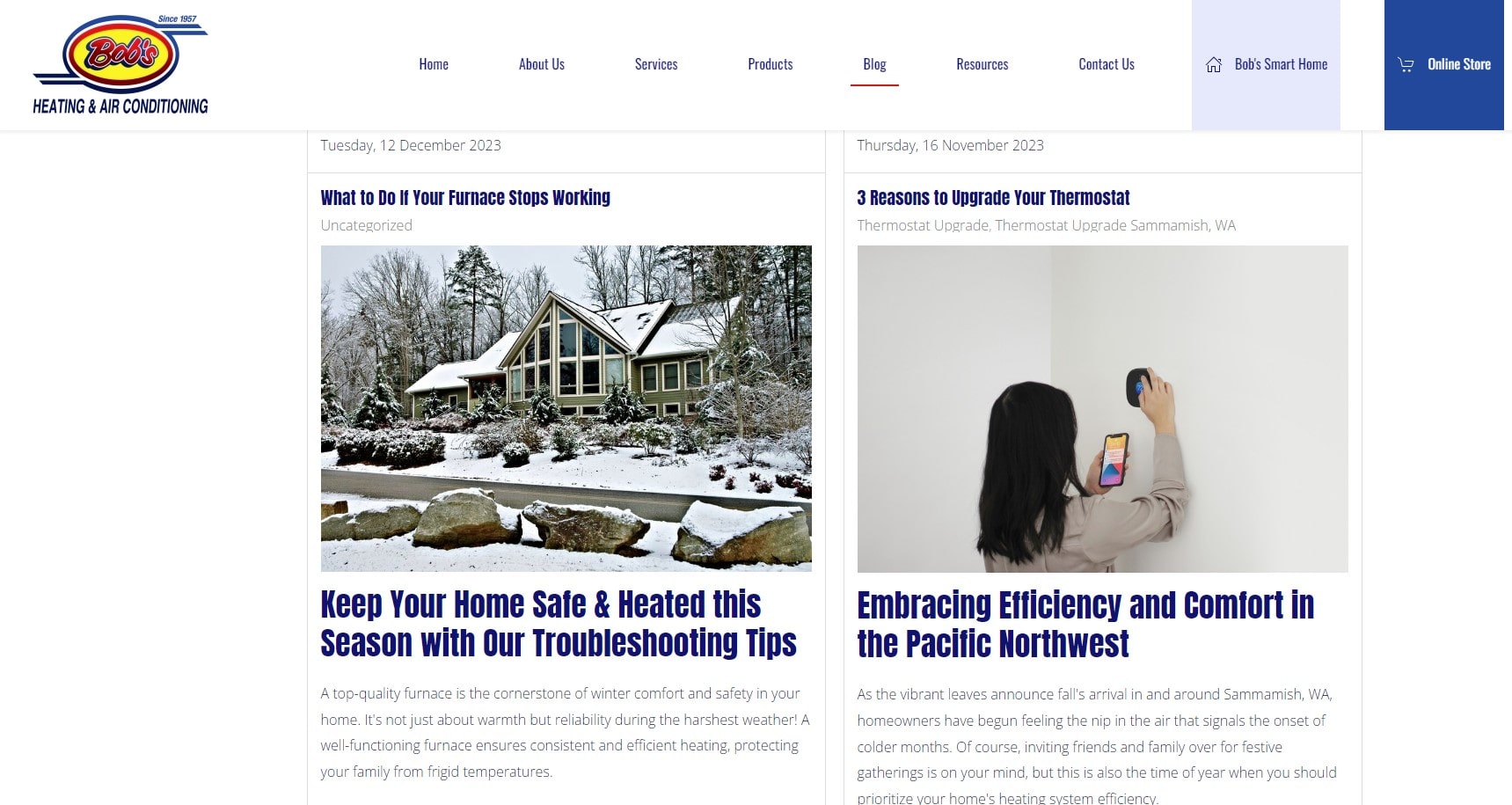
HVAC companies must write for search engines and customers. A strategic approach to content creation can significantly improve a website’s SEO, drawing in more traffic and leads. Here are key tips for crafting content that ranks well in HVAC SEO:
Understand Your Audience:
- Start by comprehensively understanding your target audience – homeowners, property managers, or commercial clients.
- Determine their common HVAC concerns, questions, and the type of information they seek.
- Address these requirements with solutions and expert advice in your content.
Focus on Quality and Relevance:
- Ensure your content is well-researched, accurate, and provides genuine value to readers.
- Content should be relevant to the HVAC industry and your specific services.
- Avoid filler content; every piece should have a clear purpose and address a specific topic or query.
Utilize Keywords Strategically:
- Incorporate relevant keywords naturally throughout your content.
- Focus on a mix of broader industry terms and specific long-tail keywords that potential customers might use.
- Avoid keyword stuffing; instead, use keywords contextually within valuable content.
Emphasize Local SEO in Content:
- For local businesses, include location-based keywords in your content.
- Write about local events, weather-specific HVAC advice, or community projects your company is involved in.
- Localized content increases your relevance in local search results and appeals to the community you serve.
Create a Variety of Content Types:
- Diversify your content with blog posts, infographics, how-to guides, and videos.
- Different content targets different audiences and search purposes.
- Infographics and videos are entertaining and shareable.
Offer Solutions to Common Problems:
- Write about common HVAC issues and provide expert solutions or tips.
- Such content positions your company as knowledgeable and helpful, building trust with potential customers.
- Answering common questions can also help your content appear in Google’s featured snippets.
Update and Refresh Old Content:
- Regularly update older content to keep it relevant and accurate.
- Refreshing content can reinvigorate its performance in search engine rankings.
- Updating content is also an opportunity to add new keywords or address evolving customer needs.
Optimize for Mobile Users:
- Make your content mobile-friendly.
- Partial paragraphs, bullet points, and subheadings make content easier to read on small displays.
Leverage Internal Linking:
- Internal links lead users to relevant internet pages.
- This enhances user experience and search engine indexing.
Engage in Storytelling:
- Use storytelling to make your content more engaging and relatable.
- Share customer success stories, case studies, or the history of your company to create a more personal connection with your audience.
Measure and Analyze Content Performance:
- Regularly review how your content is performing using tools like Plerdy or Google Analytics.
- Analyzing page views, duration on page, and bounce rate reveals audience preferences.
- Learn what works and improve your content strategy with these insights.
These strategies can help HVAC companies generate search engine-optimized content that engages and informs clients. This boosts web presence, brand reputation, and business potential.
Measuring the Success of Your HVAC SEO Efforts
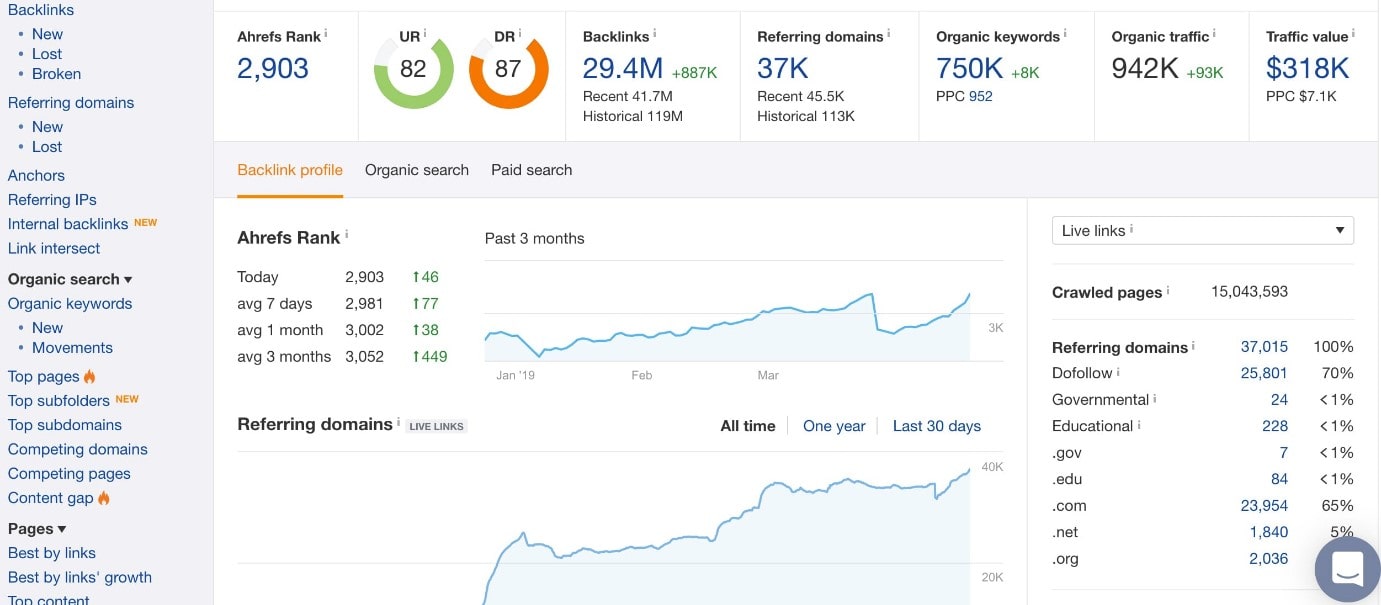
To gauge the effectiveness of an HVAC SEO campaign, it’s essential to measure key performance indicators (KPIs) that reflect the campaign’s impact on business goals. Understanding these metrics provides insights into what’s working, what’s not, and where to allocate resources for maximum return. Here are essential metrics to consider:
1. Organic Traffic:
- The primary indicator of SEO success is increased organic traffic to your website.
- Google Analytics tracks search engine visitors to your site.
- A constant or large increase in organic traffic indicates SEO success.
2. Keyword Rankings:
- Monitor the rankings of your targeted keywords. Are they appearing higher in search results over time?
- Improvement in keyword rankings typically correlates with increased visibility and traffic.
- Utilize SEO tools like SEMrush or Ahrefs to track keyword performance.
3. Conversion Rate:
- It’s not just about attracting more traffic; it’s about attracting the right traffic that converts into leads and sales.
- Track conversions from organic traffic – form submissions, phone calls, or direct emails.
- Analyze which pages are converting best and optimize underperforming pages.
4. Bounce Rate and User Engagement:
- The bounce rate refers to the proportion of website visitors who exit the site after seeing only one page.
- High bounce rates can suggest the content is irrelevant or engaging enough.
- Also, evaluate metrics like average session duration and pages per session to understand user engagement.
5. Local SEO Performance:
- For HVAC companies, local SEO is crucial. Track how your business ranks in local listings and Google Maps.
- Monitor the visibility of your Google My Business profile and the consistency of NAP (Name, Address, Phone number) across online directories.
6. Backlink Profile:
- Backlink quality and quantity show your website’s credibility.
- Use tools to assess your backlink profile, looking for increases in quality backlinks.
7. Customer Reviews and Ratings:
- Monitor and manage Yelp and Google My Business reviews.
- Positive reviews can boost local SEO and directly indicate customer satisfaction and reputation.
HVAC companies may evaluate their SEO tactics by watching these data. This data-driven approach allows for informed decisions and adjustments, ensuring continuous improvement and optimization of SEO efforts for sustained success in the digital marketplace.
Common HVAC SEO Mistakes to Avoid
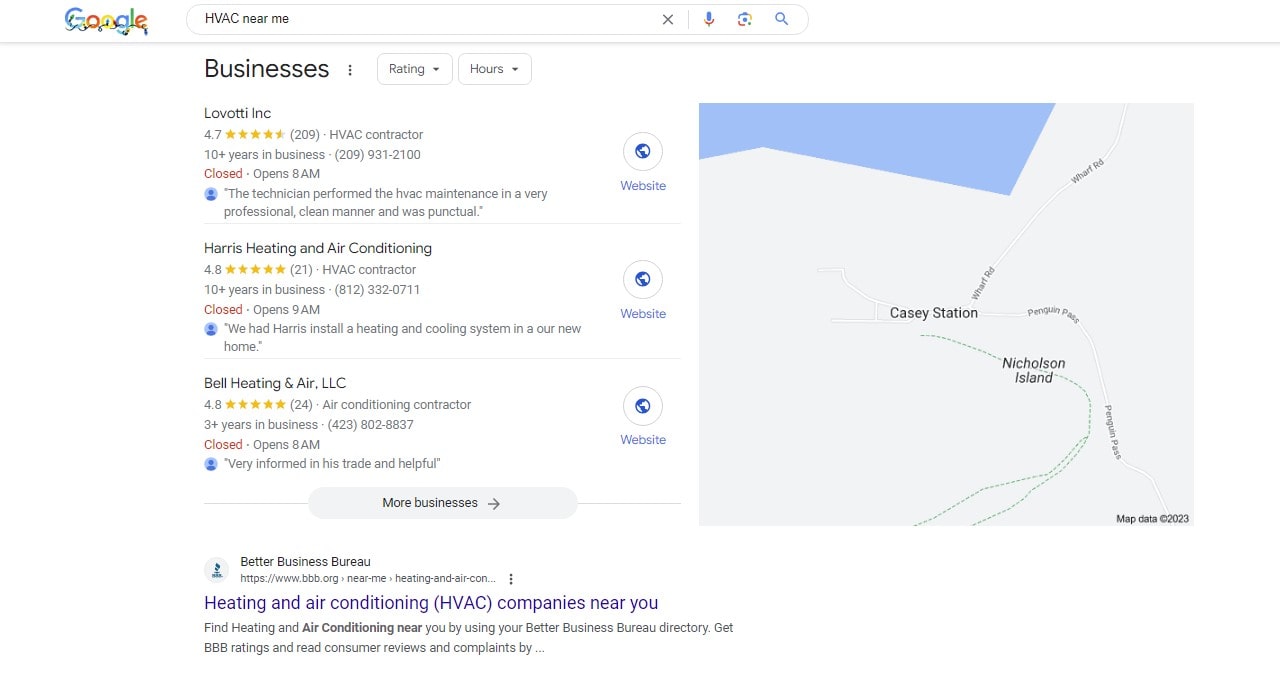
HVAC companies may fall into SEO pitfalls when optimizing their internet presence. These blunders might hurt their digital marketing and search engine results. Knowing these traps is the first step to avoiding them. Here are some common HVAC SEO mistakes to steer clear of:
- Ignoring Local SEO: HVAC services are inherently local. Neglecting local SEO, such as not optimizing for local keywords or failing to claim and update Google My Business listings, can result in missed opportunities to connect with nearby customers.
- Overlooking Mobile Optimization: With the increasing use of mobile devices for searches, a website that isn’t mobile-friendly can significantly detract from user experience and search rankings. Make your site responsive and fast on all devices.
- Keyword Stuffing: SEO need keywords, yet keyword stuffing might get you penalized by search engines. Instead, focus on integrating keywords naturally into high-quality, informative content.
- Neglecting Website Speed and Performance: Slow websites cause significant bounce rates and poor usability. Regularly check your website’s loading speed and optimize images, scripts, and CSS files to enhance performance.
- Inconsistent NAP Information: Local SEO requires NAP consistency across all web platforms. Inconsistent NAP information can confuse search engines.
- Forgoing Quality Content: Producing low-quality, thin, or duplicated content can harm your SEO efforts. Invest in creating original, valuable content that addresses your customers’ needs and questions about HVAC systems.
- Disregarding Backlinks: Backlinks from reputable sites enhance your website’s authority. Ignoring the need to build a healthy backlink profile can limit your SEO success.
- Underestimating Reviews and Testimonials: Online reviews not only bolster local SEO but also build trust and credibility. Invite happy customers to post reviews on Google My Business and other platforms.
- Not Keeping Up with SEO Updates: SEO is ever-evolving. Not keeping up with trends and algorithm updates can make your strategies unsuccessful.
By avoiding these common mistakes, HVAC companies can significantly improve their SEO strategies, leading to better search engine rankings, increased traffic, and more business opportunities. An awareness of these pitfalls and a proactive approach to SEO can set the stage for successful digital marketing campaigns in the competitive HVAC industry.
Conclusion
Now that you understand HVAC SEO apply it! Identify your target keywords, optimize your website content and technical components, and develop a strong local presence. Consistency matters. To stay on target, post high-quality material, engage with your audience, and track your progress.
Ready to improve HVAC SEO? Plerdy has extensive tools for website optimization, competitor analysis, and outcomes tracking. Learn how Plerdy can help you dominate local search results with our free trial.
Always be curious, learn, and optimize. You may succeed online with your HVAC business by being smart and data-driven. Waiting for what? Improve HVAC SEO today to breathe easily!
